This moose was photographed in the back yard of a home in Bowdoin, Maine.
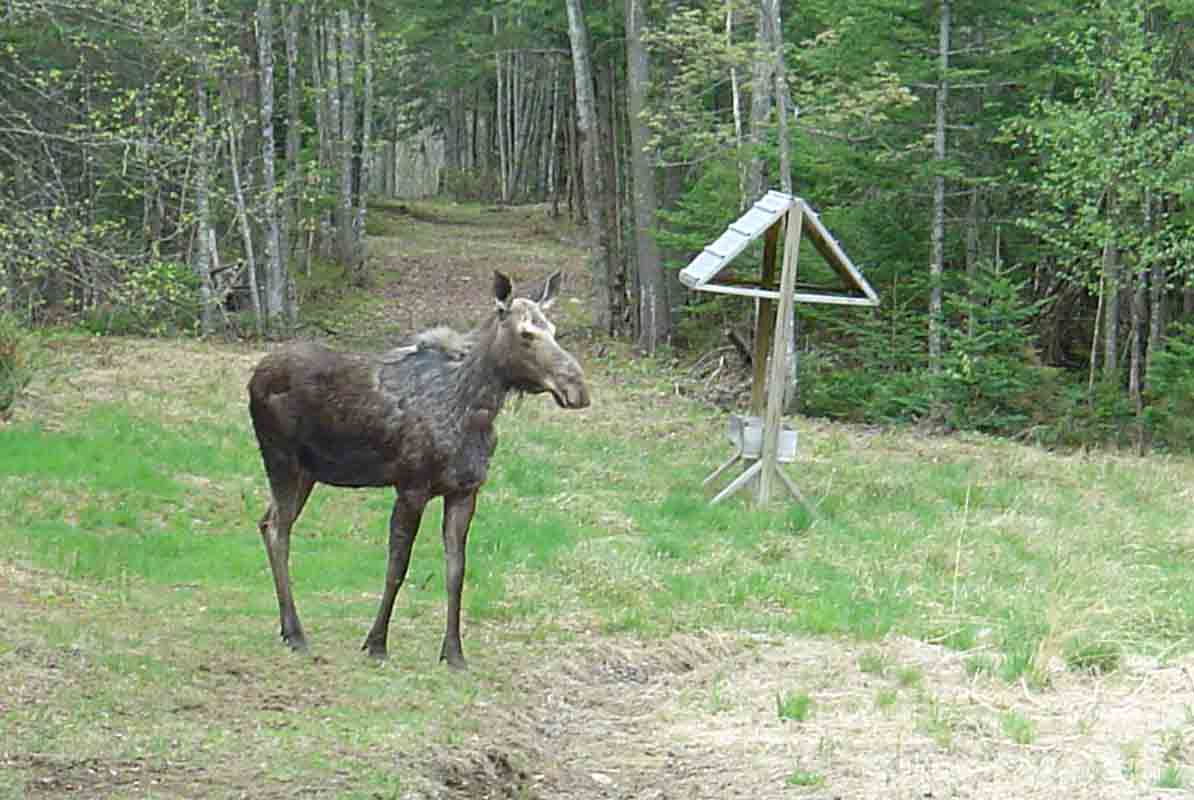
(click on image to enlarge)
Order Artiodactyla - even-toed ungulates
The tracks of moose and deer are unmistakable. The common ancestor of mammals had five toes on each foot. In the Cervidae, one of these five (toe #1, equivalent to our thumb) has been lost over time. Of the remaining four, toes 3 and 4 have each evolved into one of the two elongate parts of the hoof, and toes 2 and 5 are now the roundish dew claws behind 3 and 4, whose prints are visible in deep snow or mud. Although in a soft substrate, toes 3 and 4 splay apart, their front parts are still closer to each other than their rear parts are, and, thus, together they “point” in the direction of travel.
Maine is home to 2 species in 2 genera in 1 family (Cervidae).
If you are interested in learning about a particular species, click on the name of that species in the list below. Otherwise, to determine which genus that the animal you are trying to identify belongs to, refer to the tabular key immediately below the species list.
Family Cervidae
Alces (1 species)
Alces americanus - moose
Odocoileus (1 species)
Odocoileus virginianus - white-tailed deer
Key to Maine’s genera of Family Cervidae
| front foot size (L x W in inches) |
hind foot size (L x W in inches) |
antler portions | char. 4 | |
| Alces | 43/8–7 x 33/4–6 | 41/8–61/2–31/2–45/8 | beam, paddle, tines | |
| Odocoileus | 13/8–4 x 7/8–27/8 | 11/4–31/2 x 3/4–23/8 | beam, tines |
Alces (moose)
[information to be added]
Alces americanus (moose)
This moose was photographed in the back yard of a home in Bowdoin, Maine.

(click on image to enlarge)
Odocoileus (deer)
[information to be added]
Odocoileus virginianus (white-tailed deer)
These two deer (below left) were feeding within easy sight of the access road to the Seawall picnic area in Southwest Harbor on Mount Desert Island. In fact, this picture was taken from a car on that road. White-tailed deer scat (below right) is distinctive, usually with a small depression in one end of each pellet.
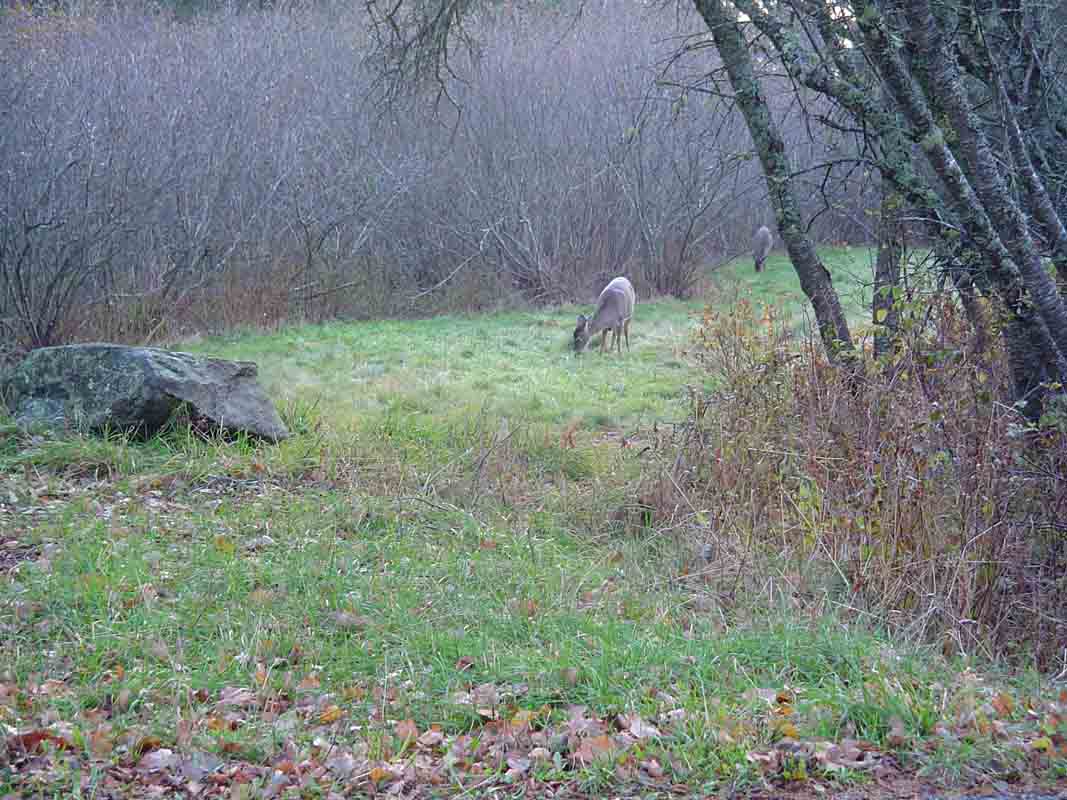
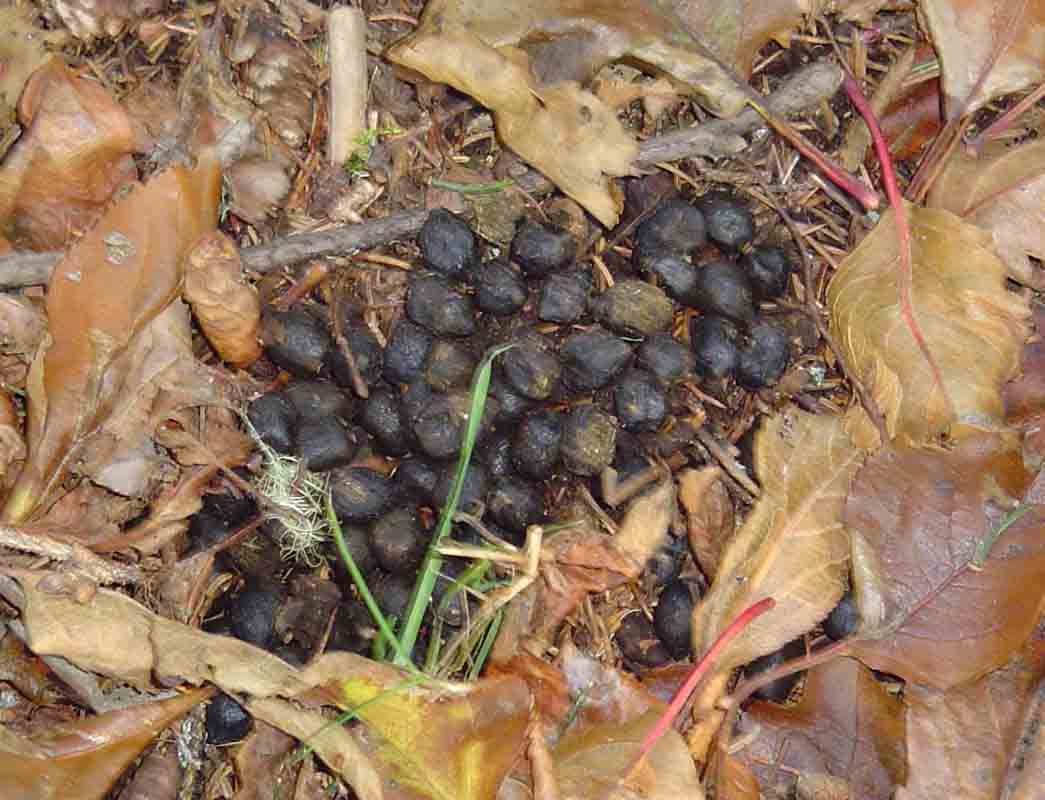
(click on an image to enlarge)
And this deer (below) was one of four seen near the base of a hill just north of the “Cadillac Mountain Entrance” (from Route 233) to the park loop road in Bar Harbor.
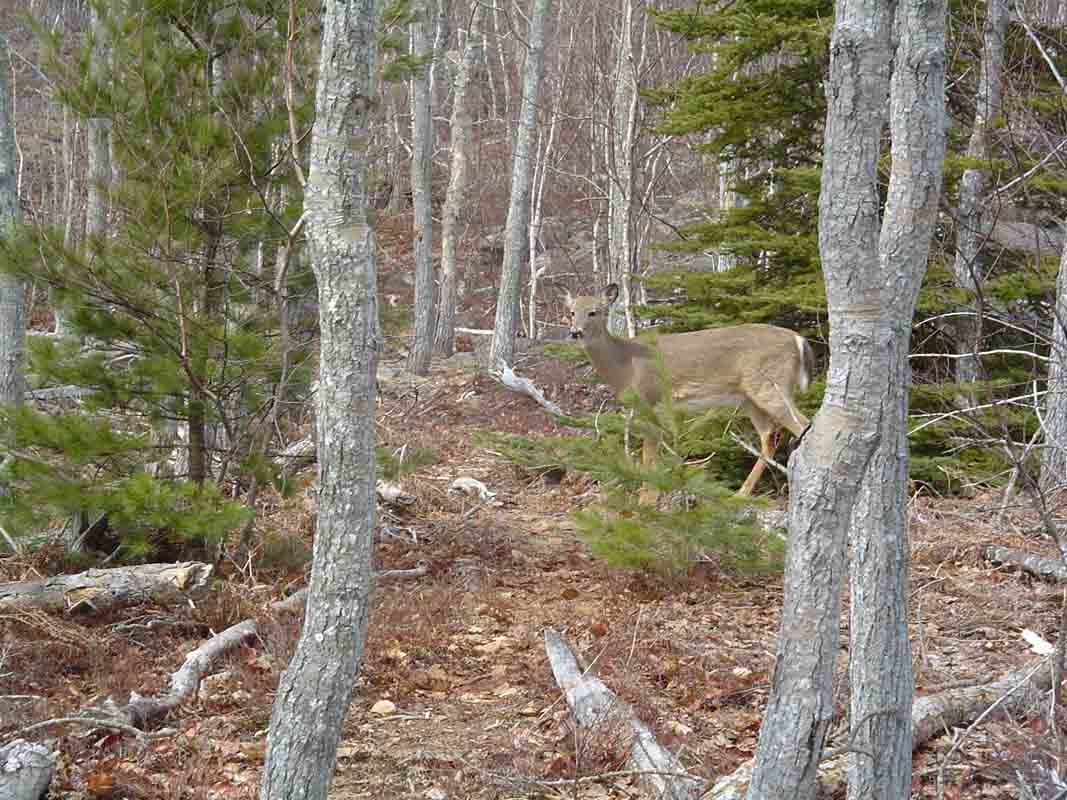
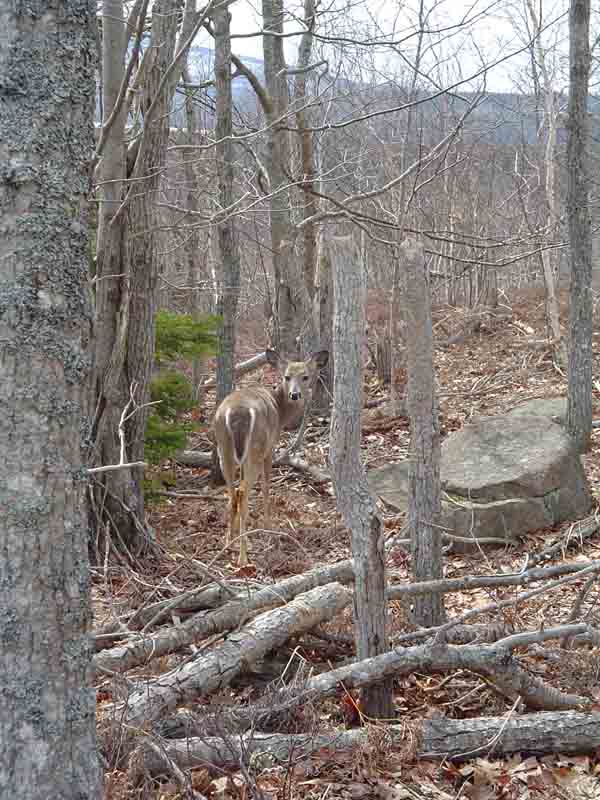
(click on an image to enlarge)
This fawn was lying safely in tall grass in a cemetery in Bar Harbor.
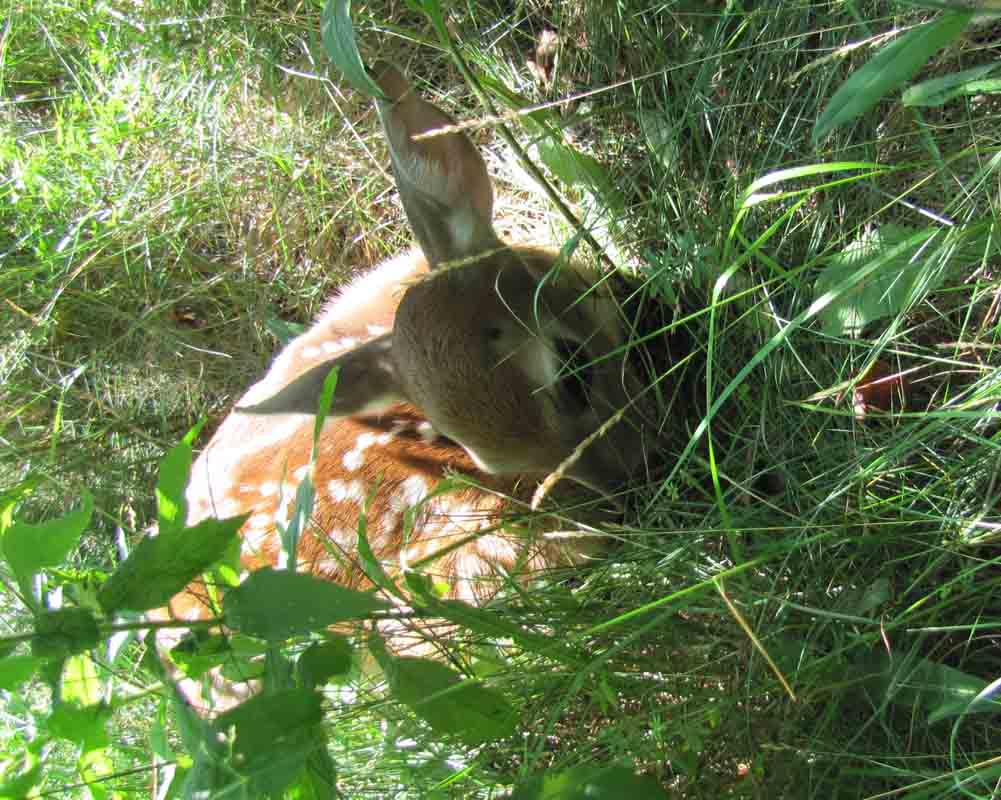
(click on image to enlarge)